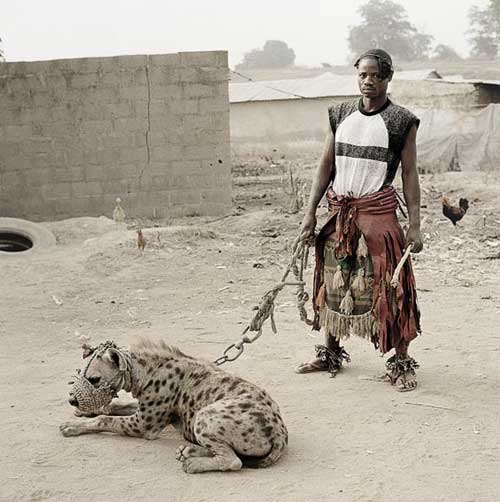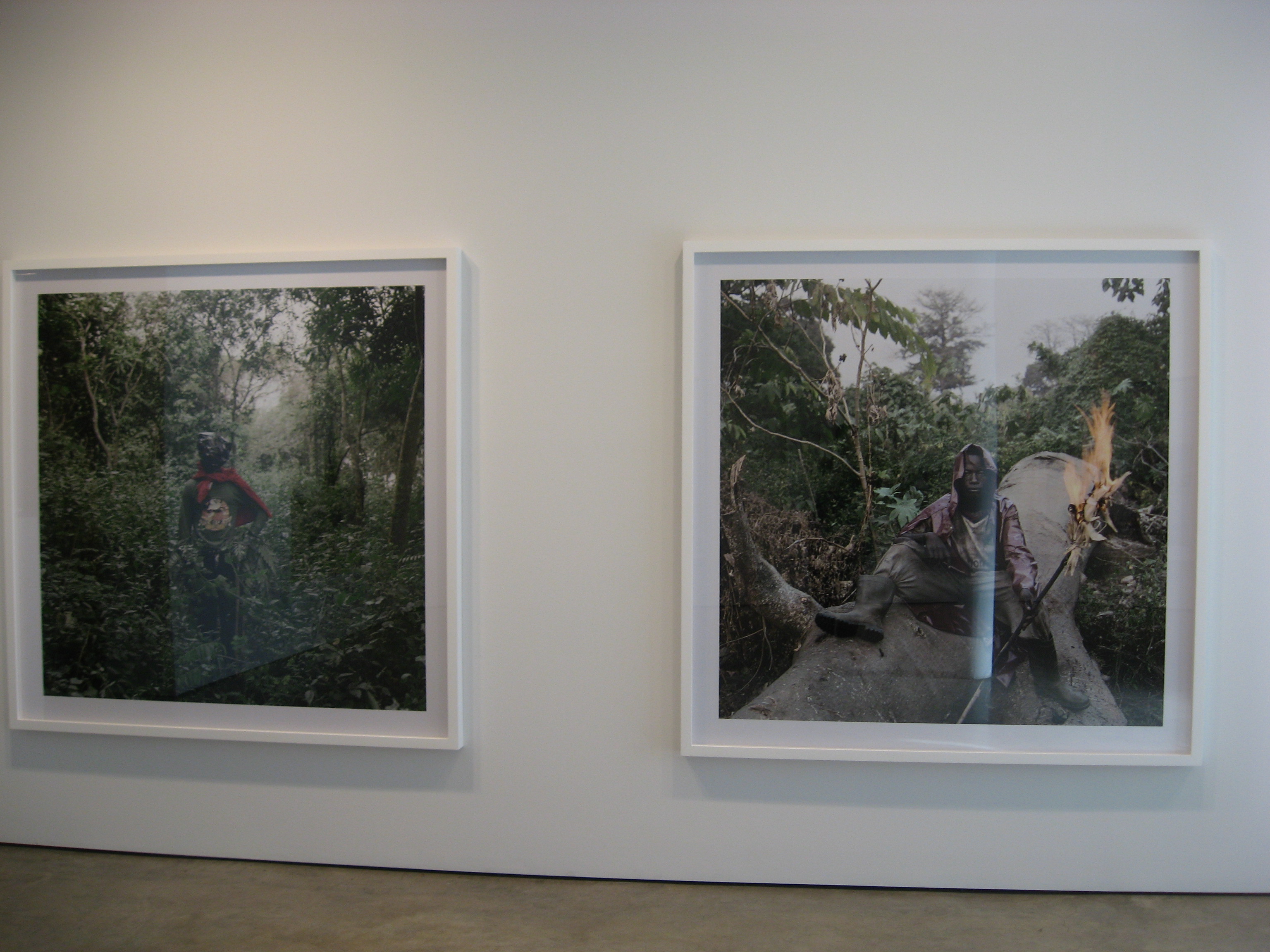I was over at the Yossi Milo gallery the day before yesterday intending to look at their latest photography exhibit that was getting a lot of press in recent times. The exhibit features the journey of a photographer (Pieter Hugo) to Abuja in Nigeria and his chronicling the lives of an itinerant group who are known as the ‘hyena handlers/guides’ (Gadawan Kura in Hausa).

In Pieter’s own words:
“In Abuja we found them living on the periphery of the city in a shantytown – a group of men, a little girl, three hyenas, four monkeys and a few rock pythons. It turned out that they were a group of itinerant minstrels, performers who used the animals to entertain crowds and sell traditional medicines. The animal handlers were all related to each other and were practicing a tradition passed down from generation to generation. I spent eight days traveling with them.”
The idea was contemporary, chronicling the lives of a lesser known group of humans such that our collective cultural knowledge was enriched about the diverse world we inhabit. The photographs were large in format, in limited editions and priced in the lower five figures – yes, that is right – in the lower five figures.
High end galleries in New York are making a lot of money by showing cultural oddities around the world. Nothing wrong with that – that is their raison d’être..
In the 18th century, Londoners used to go to Bethlem Royal Hospital to see the lunatics. For a penny one could peer into their cells, view the freaks of the “show of Bethlehem” and laugh at their antics, generally of a sexual nature or violent fights. Entry was free on the first Tuesday of the month. Visitors were permitted to bring long sticks with which to poke and enrage the inmates.
A question swirling in my mind was as follows: Would even a small fraction of proceeds from the gallery sale reach the actual individual being photographed (since the photo and the resulting dollar stream would not have been possible without the individual participating)? I do not know the answer, but my guess will be no. Would art like this smack a little bit of exploitation? Maybe…
Last year, I went about photographing homeless people in New York City to use as subjects for my painting. In preparation for a series of such posts, I published a single photograph on my blog sometime back. What initially seemed like a good idea was deflated when a comment by Kimberley drew attention to the fact that such a venture takes advantage of the situation borne by the hapless individual… On thinking about this some more, I decided that it did not seem right to spotlight people who may be less fortunate than the rest of us. Though I did take a lot of pictures, I never followed up and published them due to sense of guilt in my exploiting their circumstances for artistic gain. Standing at Yossi Milo gallery looking at the Hyena Men bought a lot of these thoughts back to me again…


Sunil:
The hyena fellow reminds me of one of the Saltimbanques that Picasso painted. As you may recall, these people, too, were performers and lived closely with a variety of beasts that were part of their touring acts. So I would have to think that these folks, living as they wish, are not worthy subjects of pity. Neither are many of the homeless. A large number retire to their domiciles after a day of importuning. Furthermore, a big problem for the police around here involves the large amount of money that many indigents carry – sometimes into the five figures. Unfortunately, a large proportion of these homeless fellow citizens have genuine issues, and the opportunistic among them only make things worse.
I think the question of potential exploitation, like any ethical question, has to be answered by each artist for her or his own situation. The mere fact that an artwork represents or refers to the homeless does not make it exploitative, in my opinion. Just like a politician talking about the homeless, it could range from virtual abuse to the best hope possible.
The primary question, for me, would be at the photo-capturing stage of the process. If the subject is not harmed physically or psychologically, the rest is up to the artist. Viewers will have their own opinions, as always, and may or may not want to support the art in question.
From what I know, I have no problem with Hugo getting rich and famous with these photographs. I would certainly have higher respect for him if some profits supported appropriate programs in Nigeria.
In Bozeman, there was recently an excellent photo exhibit (Homeless in the Last Best Place by Bill Bilverstone) showing local homeless in their environments, and telling their stories. The photographer befriended them and spent significant time with them. I don’t know if he helped them out in other than these personal ways, but the show was designed to bring attention to their little-known plight. It may have been a small factor leading to the recent establishment of a shelter here.
Artists, nowadays, choosing homeless people or, a century ago, old people living in the poor house (Paula Modersohn-Becker) as their models take advantage of who has time to spend, certainly not your typical hedge fund manager.
Maybe we should all wish for a more arrogant, self-satisfied time, when appropriation wasn’t thought of (although it was done) and exploitation was something the commies did.
Or maybe we should try our darndest (damnedest) to be as ethical as we can, in spite of the inconvenience and loss of great art it could entail. In my case, the losses might not be that great.
But truly, in Basin Montana, I am taking advantage of the whole architectural, domestic detritus of the townscape; I wonder if I should share my earnings. Luckily it hasn’t yet been a problem.